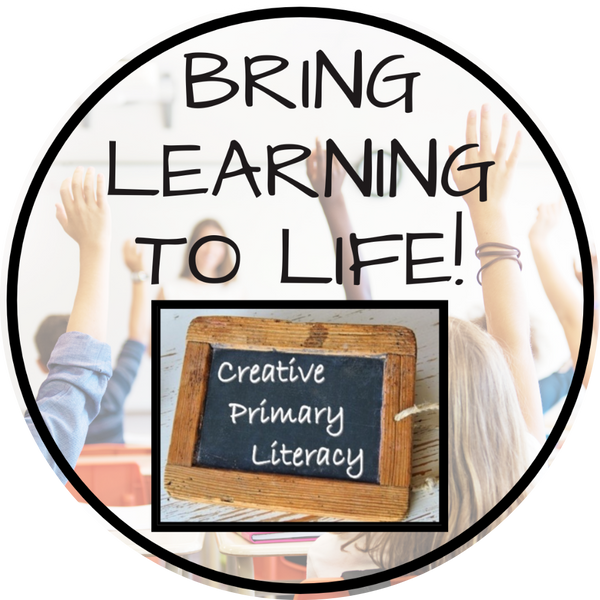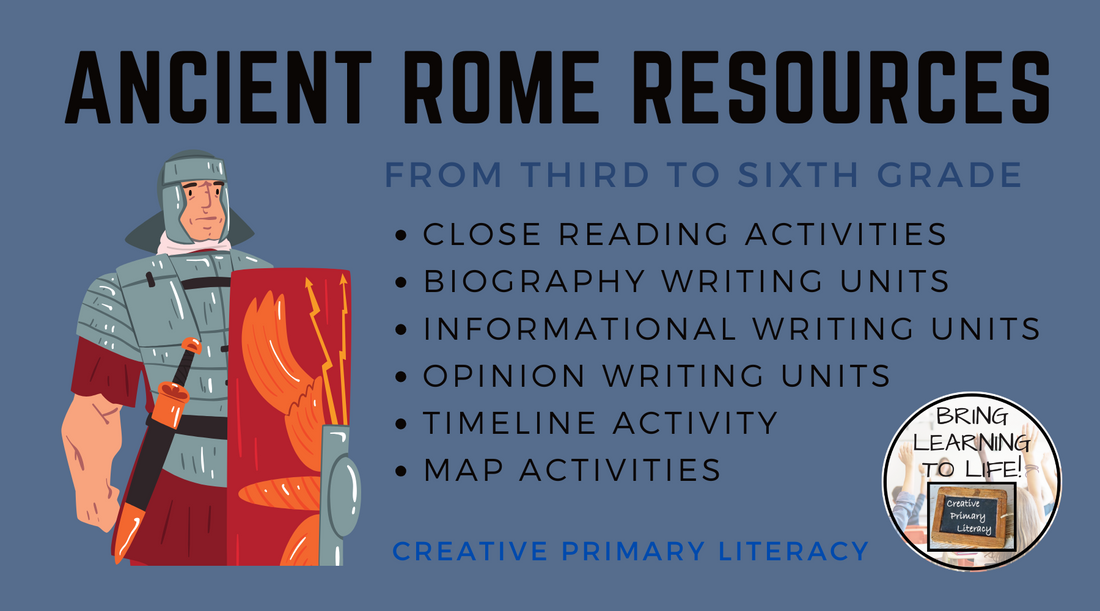The historical figures, famous battles, love stories and famous nemeses of Ancient Rome can make teaching and learning about the subject truly exciting for both teachers and students.
As with all other ancient civilizations, I like to start off the topic looking at a timeline of key events and figures from Rome. This timeline activity allows students to research and sort these key events from the beginning of the civilization to the eventual fall of Rome in 476 AD, and then the end of the Byzantine Empire in 1453 AD. My students always love these lessons, and over time have inter-connected timelines of other civilizations from ancient history. This helps them to visualise the overlapping empires from other parts of the world.
Obviously there are many key figures from Rome, but the most famous story is that of Julius Caesar. My students normally have a base of knowledge about the famous leader, some of which is true and some false. So I start off by collating all of these on the whiteboard. I then use the Julius Caesar Close Reading Activity to find out if these facts are true or false. The activity also comes with a bunch of extension tasks but I generally stick to the comprehension and extension writing task.
In the next lesson I split my class into three, with each group researching Cleopatra, Mark Antony and Augustus. I use the close reading activities again, but this time use just the crossword puzzles and informational texts. As a plenary, we collate all of the information and draw up the whole story of Julius Caesar, Antony and Cleopatra, and their downfall due to Augustus. All of the close reading activities are available in the Ancient Rome Close Reading Book and in the Ancient Rome Mega Bundle.
For the first writing assignment, I allow students to choose either Julius Caesar or Augustus. We then use the biography writing units below, which are packed with facts for students to sort and templates to write up their biography project. This works great in pairs initially but with each student writing their own biography text.
For homework, I assign the Constantine Close Reading Activity and include the extension tasks, as in the next lesson they will need to have a good knowledge of the famous emperor. This activity is completely free.
We then move on to look at who was the greatest leader from Ancient Rome. The students look at all three leaders they have already encountered: Julius Caesar, Augustus and Constantine. They then work in groups and use the opinion writing unit below to write up their discussion. Depending on my cohort, I sometimes use this as a debating topic and skip the writing task.
Afterwards, we move on to look at some of the famous nemeses of Ancient Rome. First of all Spartacus, and then Hannibal. My students love these two figures and I again use the close reading activities so the students can gain more knowledge on the famous men. If I am running out of time for the topic, I sometimes let them choose and set the tasks as homework.
I finish the topic with an overview of the civilization by using the Ancient Rome Informational Writing Unit below. By the end of the unit my students have completed five close reading activities, three writing units and a timeline research activity.
All the activities above are available individually or are part of the Ancient Rome Mega Bundle of Activities.
If you have time for one last fun and engaging activity, I recommend an Escape Room activity. There are lots of fun ones on the market but I have a bundle of four about Ancient Rome, which can also be individually purchased. Some of the resources above are also included in the emergency sub plans bundle below.
For over 2000 more resources check out Creative Primary Literacy.
























